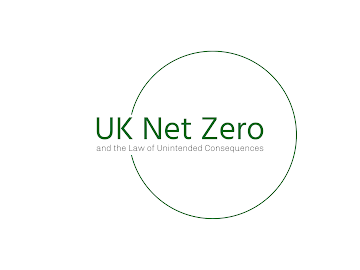Solar Energy has it all Sewn Up
 A light hearted look at the land area needed for solar PV if it were to be used as the sole renewable energy source to satisfy the needs of the UK.
A light hearted look at the land area needed for solar PV if it were to be used as the sole renewable energy source to satisfy the needs of the UK.
Dr Alan Jones, PhD, C.Eng, FIET.
Solar Energy has it all Sewn Up
An article in The Scotsman on New Year’s Day caught my eye. Written by a lawyer engaged in legal matters relating to renewable energy the article claims the industry norm for solar farms require, on average, 5 acres of land for each MW of rating for a solar farm installation. This got me thinking!
Given that the UK electrical energy demand in 2022 was 320.7TWh and assuming solar panels, on average, achieve around 10% overall annual efficiency (calculated as 100% x actual output/theoretical output) then the land mass needed to accommodate the whole of the UK’s present electrical energy demand entirely from solar would be in the order of 1.8 million acres.
Of course when EV’s become the norm and gas is replaced by heat pumps we can expect this land mass to double, but for the moment and if we stick with the need for 1.8 million acres of land – and not just any old land, but prime agricultural land, then where would be the best place to site this monster solar farm?
Well, it turns out that solar irradiance – that the watts/square metre, is better in the South of England than the North, and hence better for investors. Devon, rather conveniently, has almost the right amount of land needed, at 1.66 million acres, and it is much closer to the centres of demand for this energy than the wind turbines located in Scotland. And, if Devon isn’t enough they could easily extend into Cornwall where there is a further 0.88 million acres ripe for the taking.
Furthermore, when EV’s and heat pumps do eventually take off it makes sense to continue this expansion into Somerset, Dorset, Wiltshire and Hampshire where there is bound to be plenty of suitable agricultural land to house these solar farms.
I think I will make a proposal to Parliament along these lines but maybe leave out the bit about what happens when the sun doesn’t shine and people want to switch on their TV and/or boil a kettle of water to make a hot drink. I’m sure politicians won’t understand the implications so why worry them with unnecessary detail about the difference between energy and power.
What happens to food security is an altogether different matter but for now let’s sit back and bask in the sunshine, if you will pardon the pun!


This comment has been removed by the author.
ReplyDeleteLlegué a un recurso educativo con tabla de notas explicativa mientras organizaba mis evaluaciones y me sorprendió lo fácil que resulta entenderla.
ReplyDelete